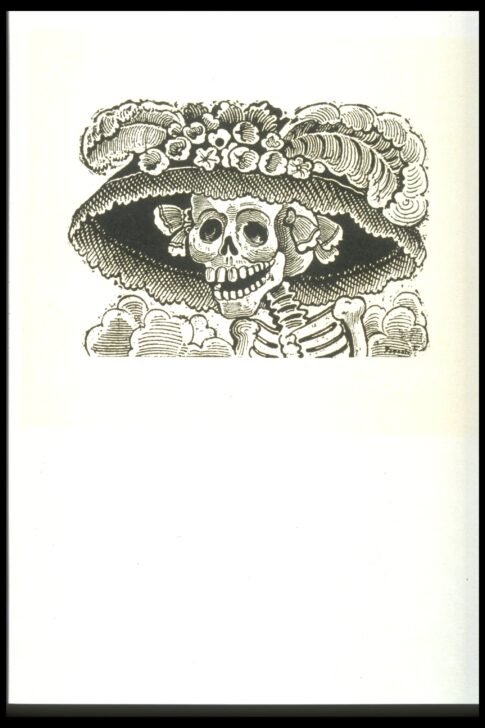Calavera de la Catrina
José Guadalupe Posada

Description
The acknowledged grandfather of Mexican social and political prints, José Guadalupe Posada was born in Aguascalientes in 1851. Early instruction came by way of his brother, a country schoolteacher, after which he went to work in the taller (workshop) of Trinidad Pedroso, who taught him lithography and engraving. Posada was already making political cartoons for a newspaper while still in his teens. In and out of trouble with various local politicians, Posada eventually moved to Mexico City in 1888. There he worked at a publishing company run by Ireneo Paz, famed liberal journalist and grandfather of Nobel Prize winner Octavio Paz. Posada contributed drawings and engravings to numerous magazines, so many that he was forced to open two additional workshops. Often taking Mexico’s traditional Day of the Dead (November 2) celebration as his theme, Posada would depict images of skeletons in various activities and clothing. His use of calaveras (broadly translated as "skeletons") as a metaphor for corrupt society makes Posada a pioneering social satirist in Mexico.
Calavera de la Catrina is also known as the Calavera of the Female Dandy. It is typical of Posada’s work that mocked the upper classes during the rule of dictator Porfirio Díaz. One of Posada’s most popular and enduring prints (even Diego Rivera chose to include it in one of his murals), the piece depicts an elaborately decorated hat engulfing the head of an aristocratic woman. Such finery was symbolic of the extreme wealth of large landowning families, which were often in collusion with the dictator Díaz.
Subject Matter:
Calavera de la Catrina is also known as the Calavera of the Female Dandy. It is typical of Posada’s work, which mocked the upper classes during the rule of dictator Porfirio Díaz. One of Posada’s most popular and enduring prints (even Diego Rivera chose to include it in one of his murals), this piece depicts an elaborately decorated hat engulfing the head of an aristocratic woman. Such finery was symbolic of the extreme wealth of large landowning families, which were often in collusion with the dictator Díaz.
Physical Description:
This pring shows the shoulders and skull of a skeleton wearing a wide brimmed hat adorned with plumes and decorative objects.
Usage Rights:
If you are interested in using an image for a publication, please visit https://umma.umich.edu/request-image/ for more information and to fill out the online Image Rights and Reproductions Request Form.